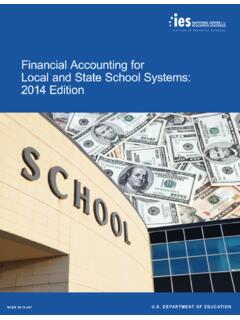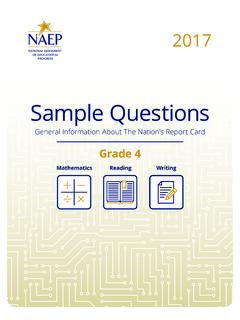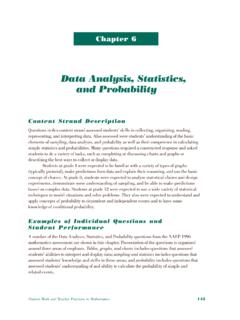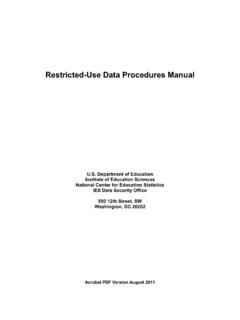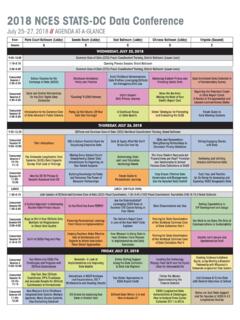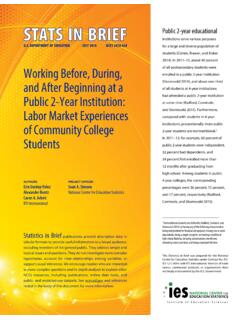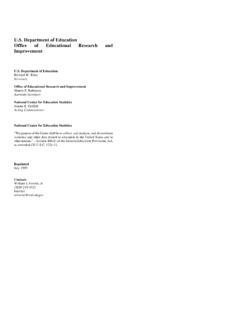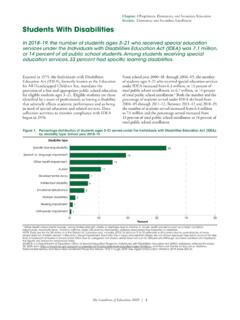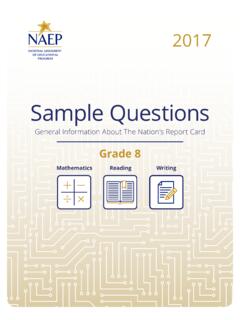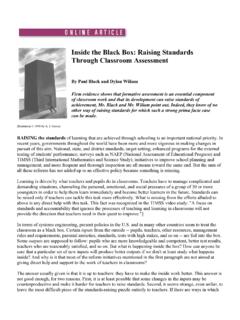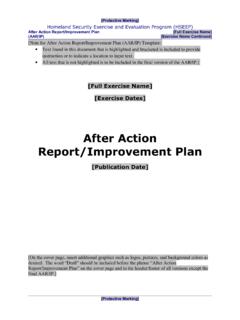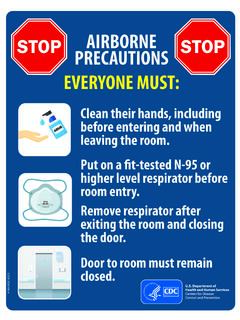Transcription of NCES Locale Classifications and Criteria
1 NCES Locale Classifications and Criteria The NCES Locale framework is composed of four basic types (City, Suburban, Town, and Rural) that each contains three subtypes. It relies on standard urban and rural definitions developed by the Census Bureau, and each type of Locale is either urban or rural in its entirety. The NCES locales can be fully collapsed into a basic urban rural dichotomy, or expanded into a more detailed collection of 12 distinct categories. These subtypes are differentiated by size (in the case of City and Suburban assignments) and proximity (in the case of Town and Rural assignments). For additional information about the Locale Criteria , see the Locale Boundaries User s Manual. City Large (11): Territory inside an Urbanized Area and inside a Principal City with population of 250,000 or more. City Midsize (12): Territory inside an Urbanized Area and inside a Principal City with population less than 250,000 and greater than or equal to 100,000.
2 City Small (13): Territory inside an Urbanized Area and inside a Principal City with population less than 100,000. Suburban Large (21): Territory outside a Principal City and inside an Urbanized Area with population of 250,000 or more. Suburban Midsize (22): Territory outside a Principal City and inside an Urbanized Area with population less than 250,000 and greater than or equal to 100,000. Suburban Small (23): Territory outside a Principal City and inside an Urbanized Area with population less than 100,000. Town Fringe (31): Territory inside an Urban Cluster that is less than or equal to 10 miles from an Urbanized Area. Town Distant (32): Territory inside an Urban Cluster that is more than 10 miles and less than or equal to 35 miles from an Urbanized Area. Town Remote (33): Territory inside an Urban Cluster that is more than 35 miles from an Urbanized Area. Rural Fringe (41): Census-defined rural territory that is less than or equal to 5 miles from an Urbanized Area, as well as rural territory that is less than or equal to miles from an Urban Cluster.
3 Rural Distant (42): Census-defined rural territory that is more than 5 miles but less than or equal to 25 miles from an Urbanized Area, as well as rural territory that is more than miles but less than or equal to 10 miles from an Urban Cluster. Rural Remote (43): Census-defined rural territory that is more than 25 miles from an Urbanized Area and also more than 10 miles from an Urban Cluster.
